PTSD is a western concept, states Dr. Jabr, Chair of the Mental Health Unit at the Palestinian Ministry of Health.
“PTSD better describes the experiences of an American soldier who goes to Iraq to bomb and go back to the safety of the United States,” Dr. Jabr says in an interview. “He’s having nightmares and fears related to the battlefield and his fears are imaginary.”
For people, especially children, who have no lives outside of those battlefields, who know of no form of existence except living in constant fear of another airstrike, another terrorist attack, another suicide bomber, their fear is real and never-ending.
“There is no ‘post’ because the trauma is repetitive and ongoing and continuous,” Dr. Jabr adds.
Emphasizing the United Nation’s Peace, Justice, and Strong Institutions Sustainable Development Goal (SDG) is a visual project by artist-activist Aziz Hazara’s Bow Echo.
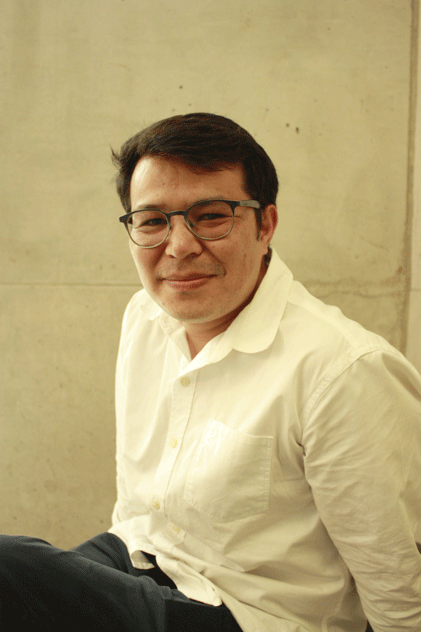
Aziz, an interdisciplinary artist based in Kabul, Afghanistan and Ghent, Belgium, questions “identity, memory, archive, conflict, surveillance and migration in the context of power relations, geopolitics and the panopticon” in his installations.
Bow Echo is a video installation consisting of five large screens, surrounding the viewer in a pentagon shape. Each screen features a scene by a mountain ridge overlooking Kabul. Young boys try to climb atop the ridge while battling the fierce winds and trying to blow a small plastic toy trumpet. The video is a little over four minutes long.
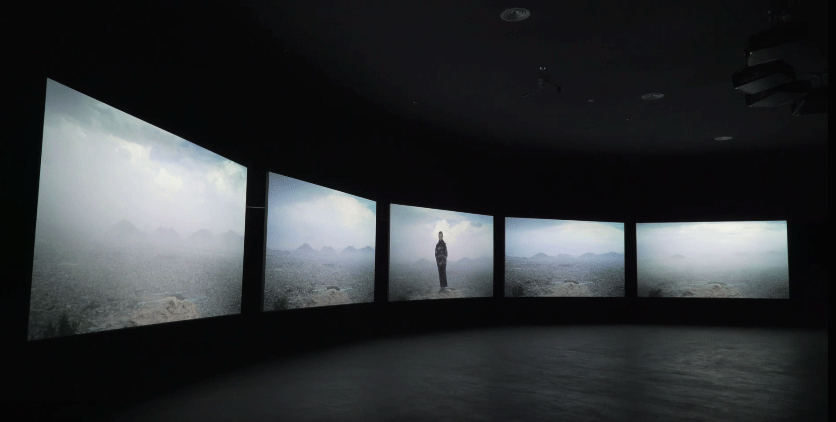
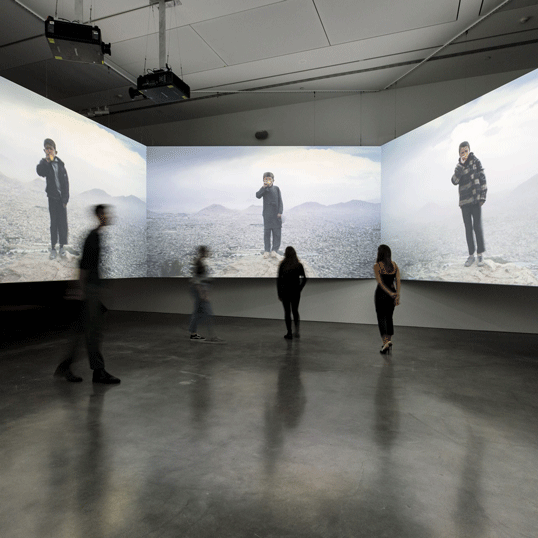
A bow echo is a type of deadly storm. It starts from an epicentre and then pans out in the shape of a bow, creating widespread destruction in its path. As the video addresses the mass-scale destruction of war and the large-scale impact of a single suicide bomber, the title of the installation is quite apt.
The sound of the toy trumpets can hardly be heard over the noise of helicopters and drones as the video progresses. The eerie sound emphasizes the community’s plight amidst war and terrorist attacks.
While discussing the harsh background noise with ACMI, Aziz revealed that he deliberately added the drone sounds, especially when the boys are tripping and falling while trying to climb atop the ridge. All the viewer is left with are the drone sounds.
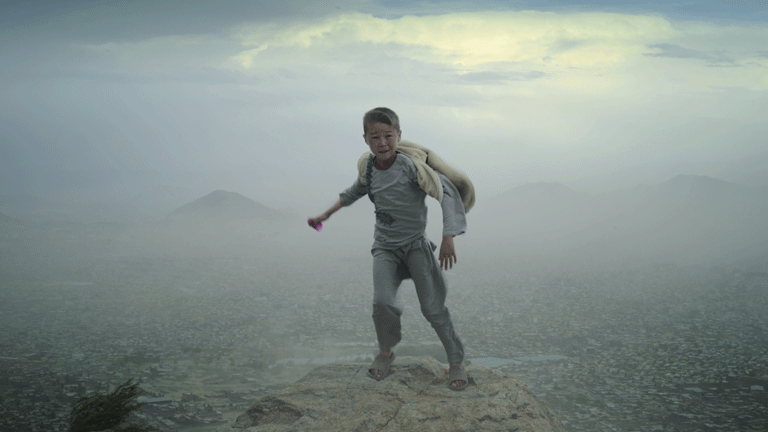
Aziz also comments on the similarity of the toy trumpet sound mixed with the stormy winds and the drone noises. He wants the sound to be interlinked with the boy’s bodies in the video which contextualizes numerous suicide bombers. According to Aziz, the sound itself is political because someone is using their body to create that sound and to create devastation to themselves and others.
Aziz’s installation calls on the inadequacy of work being done under the United Nation’s Peace, Justice, and Strong Institutions Sustainable Development Goal. While explaining the normalcy of violence in Afghanistan, he says, “You will hear the sound and recognize that probably it’s a suicide bomb. Maybe you know the location. It’s a constant presence.”
The location for Bow Echo is also strategically chosen by Aziz. The location was previously controlled by a military warlord. He and his militia could see everything in the town beneath them from the mountain ridge.
Juxtaposed with Aziz’s interest in panopticon (a type of circular building that allows guards to monitor all prisoners), Bow Echo starkly contrasts the power imbalance in war-torn communities. The warlords control every movement; they know the number of houses, people, children, vehicles in that community. But people have no sight of them. People have no agency over their lives.
Check out the complete video installation of Bow Echo on Google Arts and Culture website.
Aziz’s work also highlights the United Nation’s No Poverty and Reduced Inequalities Sustainable development Goals, or the lack thereof. Children are unsafe in their own homes, have no access to medicines and cannot afford education or nutritious meals. With more than 19,000 children killed or maimed by war in 2020, according to the United Nation’s Children and Armed Conflict (CAAC) report, an unprecedented amount of work needs to be done.
Aziz’s other work, Monument, pays homage to the more than 40 children who were killed by a suicide bomber at a tuition centre in 2018. Since then, the number of suicide bombers targetting young children has only increased. Another devastating suicide bomber attack happened in 2020 in Kabul which left more than two dozen people dead.
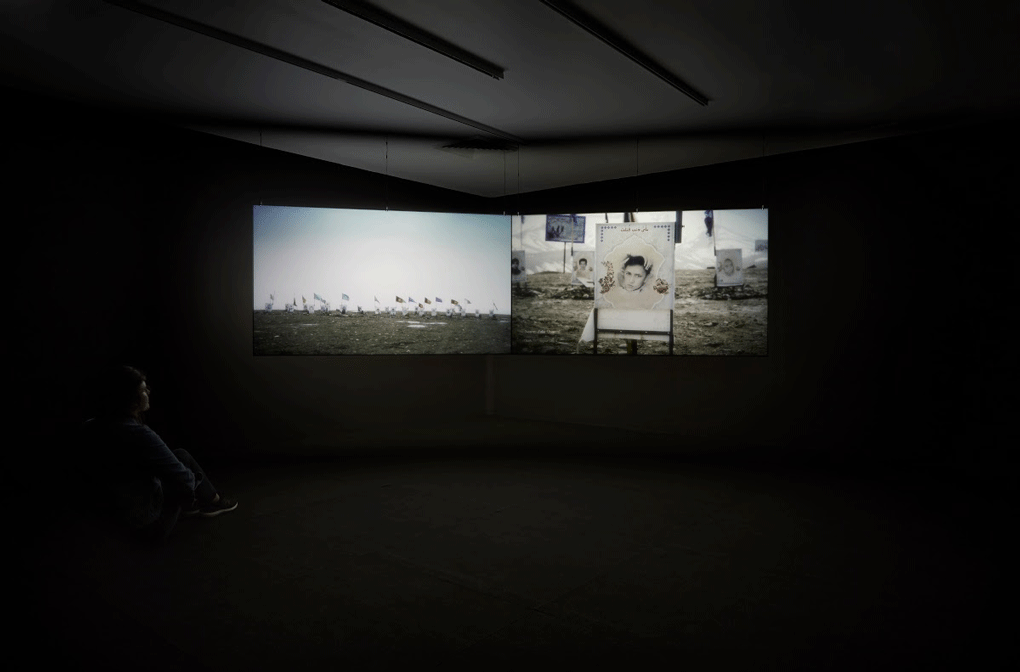
To support humanitarian efforts in Afghanistan, check out Save the Children’s website to learn how you can help children have a healthy life and have access to a safe learning environment.
